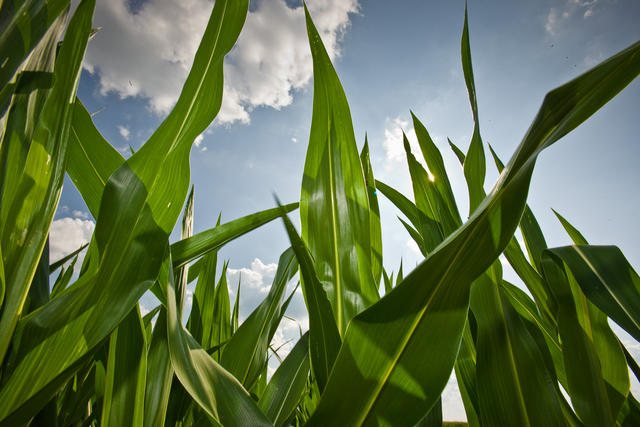Decision deadline nearing for risk protection programs
Decision deadline nearing for risk protection programs

The 2012 drought greatly reduced Kentucky corn yields and left many producers wondering whether they have the protection they need in case of another disastrous season.
University of Kentucky College of Agriculture economist Cory Walters said producers can choose between two risk protection programs offered by the U.S. Department of Agriculture--the Direct and Counter-Cyclical Payment Program and the Average Crop Revenue Election.
ACRE was born out of the 2008 Farm Bill and is available to producers who grow corn, soybeans, wheat and many other crops.
Unlike the traditional DCP support programs that offer payments and marketing assistance loans if a price of a particular crop falls below a certain level, ACRE pays if crop revenue falls below a revenue guarantee. Revenue includes price and yield.
The revenue guarantees are based on a calculation that includes the average of U.S. cash prices from the previous two years and the average state yields for a crop in the past five years, minus the highest and lowest yielding years. As a result, revenue guarantees will change each year but by no more than 10 percent from one year to the next. Therefore, the higher the previous two years' cash prices and the higher the state yields from the previous five years, the better chance a producer has to receive an ACRE payment.
While it was initially a five-year program, ACRE has been extended for the 2013-2014 marketing year. Producers enroll in the program by Farm Service Agency farm number, and the deadline to enroll is June 3. The DCP deadline is Aug. 3.
Walters suggested producers start filling out their paperwork for both programs but wait until closer to June 3 to decide which program may work best for their operation, as grain markets continue to fluctuate and concerns about planting delays exist due to a wet, cold spring.
“Chances of an ACRE payment are likely less than 30 percent and chances of a counter-cyclical payment are near zero,” Walters said. “As June 3 approaches, producers should closely watch the markets as grain prices should be their deciding factor.”
ACRE pays when actual state revenue falls below the state revenue guarantee. Assuming average state yields, the ACRE trigger price, or where payments start due to low prices for the 2013-2014 marketing year, is currently $4.77 a bushel for corn and $13.09 a bushel for soybeans. If state yields are higher, the trigger price will be lower.
Walters estimated that Kentucky corn producers who enrolled in ACRE for the 2012-2013 marketing year will receive a payment from the program this year as the past summer’s drought greatly reduced crop yields. He said the average payment from the program would be around $100 per acre. This is higher than the previous ACRE payment record of $95.32 for wheat in 2009. Final payment amounts will not be determined until the current marketing year ends Aug. 31.
ACRE does have payment limits, and Walters estimated those to be around $73,000 per producer.
Those who enroll in ACRE forgo any counter-cyclical program payments, forfeit 20 percent of direct payments and have loan rates reduced by 30 percent. Walters estimated that for most producers this would be less than 1 percent of their expected revenue.
Those wanting more information on the USDA risk protection programs should contact their local FSA office or visit http://www.fsa.usda.gov/FSA/webapp?area=home&subject=dccp&topic=landing.
Agricultural Economics Extension Weather


